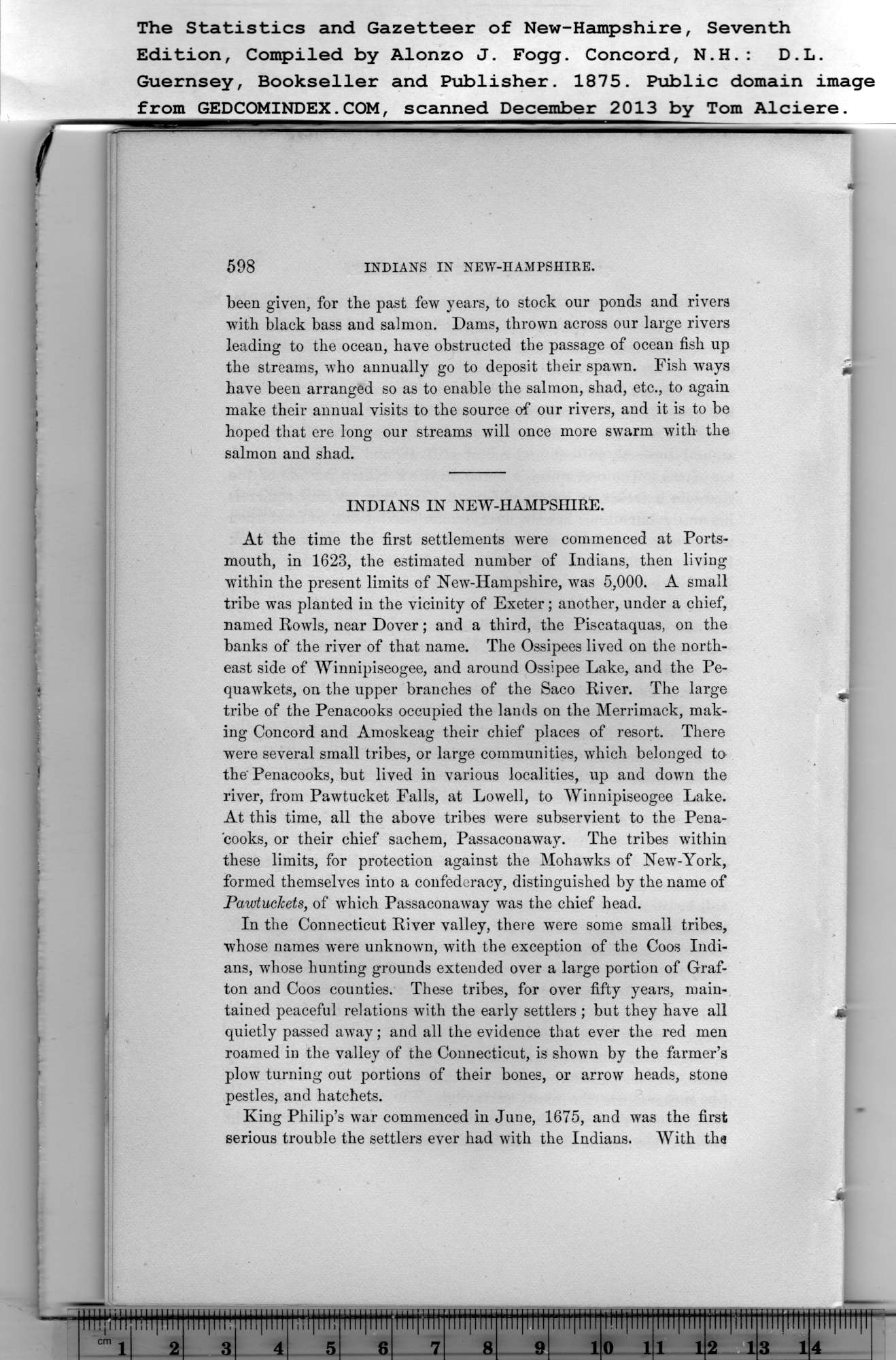|
598 INDIANS IN NEW-HAMPSHIRE.
been given, for the past few years, to stock our ponds and rivers
with black bass and salmon. Dams, thrown across our large rivers
leading to the ocean, have obstructed the passage of ocean fish up
the streams, who annually go to deposit their spawn. Fish ways
have been arranged so as to enable the salmon, shad, etc., to again
make their annual visits to the source of our rivers, and it is to be
hoped that ere long our streams will once more swarm with the
salmon and shad.
INDIANS IN NEW-HAMPSHIRE.
At the time the first settlements were commenced at Ports-
mouth, in 1623, the estimated number of Indians, then living
within the present limits of New-Hampshire, was 5,000. A small
tribe was planted in the vicinity of Exeter; another, under a chief,
named Rowls, near Dover; and a third, the Piscataquas, on the
banks of the river of that name. The Ossipees lived on the north-
east side of Winnipiseogee, and around Ossipee Lake, and the Pe-
quawkets, on the upper branches of the Saco River. The large
tribe of the Penacooks occupied the lands on the Merrimack, mak-
ing Concord and Amoskeag their chief places of resort. There
were several small tribes, or large communities, which belonged to
the' Penacooks, but lived in various localities, up and down the
river, from Pawtucket Falls, at Lowell, to Winnipiseogee Lake.
At this time, all the above tribes were subservient to the Pena-
cooks, or their chief sachem, Passaconaway. The tribes within
these limits, for protection against the Mohawks of New-York,
formed themselves into a confederacy, distinguished by the name of
Pawtuckets, of which Passaconaway was the chief head.
In the Connecticut River valley, there were some small tribes,
whose names were unknown, with the exception of the Coos Indi-
ans, whose hunting grounds extended over a large portion of Graf-
ton and Coos counties. These tribes, for over fifty years, main-
tained peaceful relations with the early settlers ; but they have all
quietly passed away; and all the evidence that ever the red men
roamed in the valley of the Connecticut, is shown by the farmer’s
plow turning out portions of their bones, or arrow heads, stone
pestles, and hatchets.
King Philip’s war commenced in June, 1675, and was the first
serious trouble the settlers ever had with the Indians. With tha
PREVIOUS PAGE ... NEXT PAGE
This page was written in HTML using a program written in Python 3.2
|
